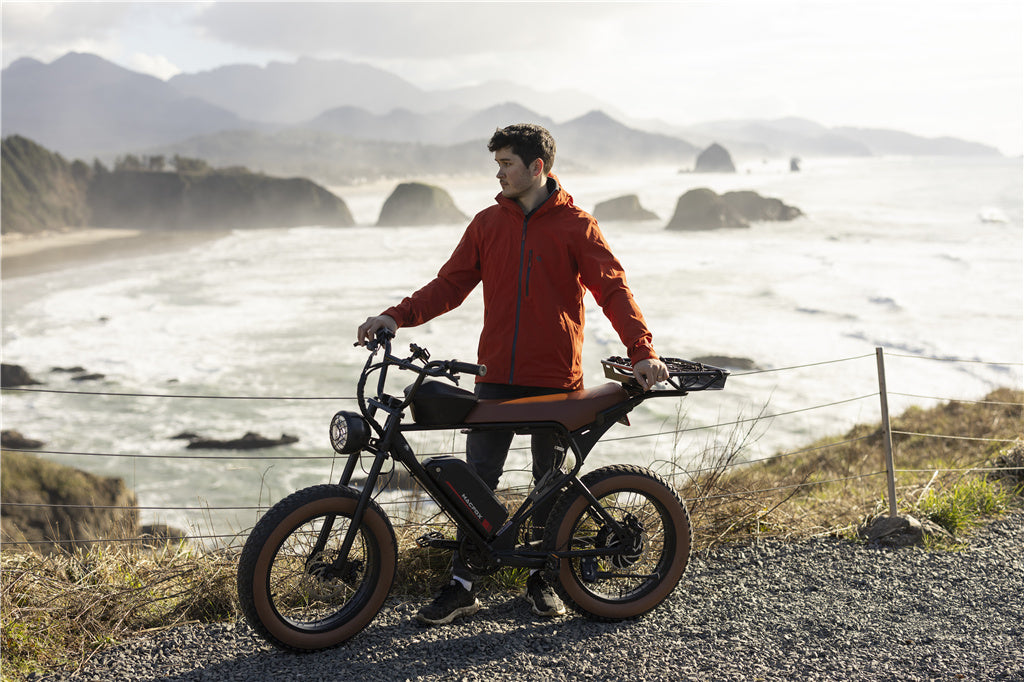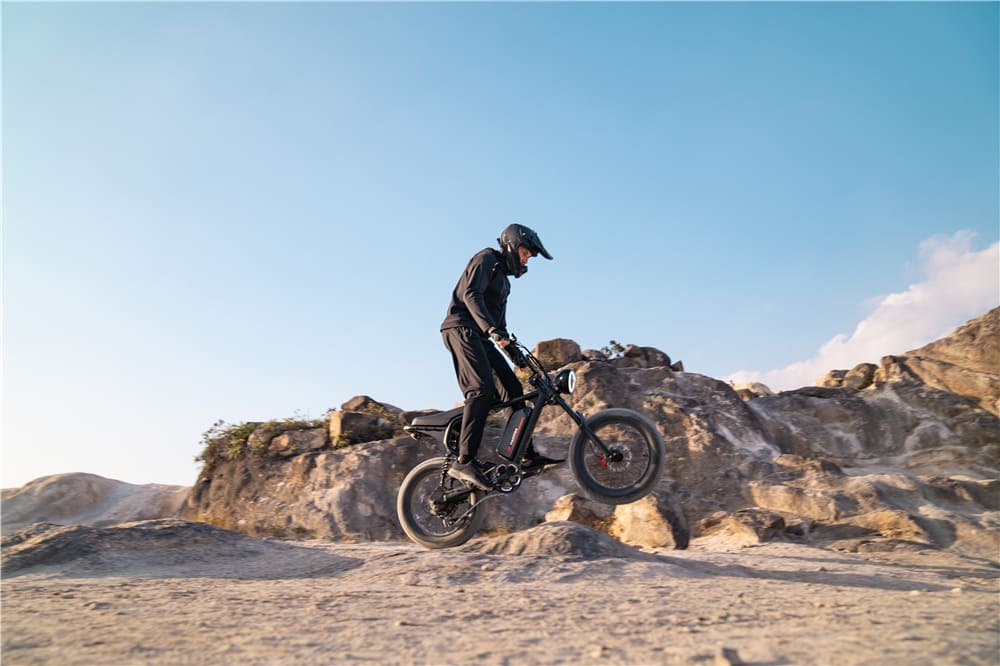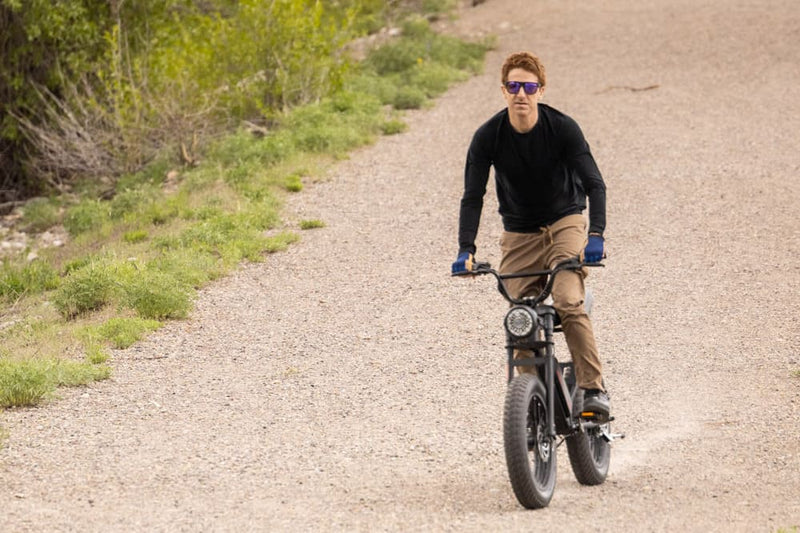Mountain biking truly delivers a thrill like never before, blending the thrill of high-speed adventure with the rugged beauty of nature. But it's not just about adrenaline. To truly get the most out of mountain biking, you need a combination of skill, endurance, and technical prowess. Despite the inherent risks—yes, spills and thrills are part of it—the sport rewards those who are prepared. So before you think the possibility of falls and bruises is a deal-breaker, remember that with the right knowledge and attitude, mountain biking can be both safe and exciting.
Avoiding unneeded rolls begins with understanding the art of staying upright on your e-bike. It's not just about preventing obstacles; it's about comprehending and using the right methods to browse them. This post acts as your overview to prepping your body for the adventure in advance, guaranteeing you can tackle trails with the finesse of an experienced pro, minimizing the likelihood of accidents along the road.
The Crucial Role of Upright Posture in Mountain Biking

An upright pose isn't practically looking positive on your bike; it's an essential element of risk-free and efficient mountain cycling. This position boosts your stability and control, making it much easier to deal with irregular surfaces and unexpected obstacles. It's not practically the bike's efficiency yet exactly how you meld with it to create a smooth ride. By keeping an upright position, you're not simply lowering the threat of injuries; you're proactively boosting your riding experience, permitting much better equilibrium and a smoother journey over rocks, origins, and ruts.
Key Elements of an Upright Stance
Back Position: A straight yet flexible back is your support. It assists in maintaining an optimal center of mass, which is vital for balance and control. Way too much leaning can throw you off, so go for that sweet area of centered position.
Weight Distribution: Stabilize your weight evenly throughout both pedals. Modifications may be needed based on the surface-- leaning back slightly on descents ensures you don't go tumbling over the handlebars while keeping enough pressure on the front wheel to maintain control.
Arm joints and Knees: Somewhat curved arm joints and knees are your integrated shock absorbers. They assist you in navigating through the bumps and dips effortlessly, making the most challenging terrains feel a lot more manageable.
Driving Like a Pro: Tips and Techniques
Diving much deeper into the art of hill cycling, understanding the drive is akin to finding out a complicated dancing. Each activity, each choice, plays a critical role in browsing the ever-changing terrain of a hill route. To truly ride like a pro, you have to surpass fundamental biking skills and welcome innovative methods and approaches. Here's a better look at refining your approach to hill cycling, ensuring you're not simply riding the trail but mastering it.
Enhanced Gaze Control
Stare control has to do with more than simply enjoying the roadway; it has to do with predicting it. Pros do not just see the path; they read it. By extending your stare 2 to 3 meters ahead, you're not simply reacting to the trail as it comes; you're preparing for it, psychologically mapping out your relocation advance. This insight permits smoother transitions, quicker adjustments, and a more proficient ride. It's about anticipation, ensuring every twist, turn, and barrier is made up before you reach it.
Advanced Weight Transfer
Weight transfer is a dynamic procedure that changes with the shapes of the trail. Climbing up high hills calls for changing your weight forward to preserve grip and protect against the front wheel from lifting. Conversely, when coming down, moving your weight back keeps you grounded and protects against over-the-bars incidents. This dynamic stabilizing act is essential for maintaining momentum and control. It's not just about relocating your weight; it has to do with when and exactly how you do it, using your body as a counterbalance to the bike's motion.
Precision in Braking
Braking on an MTB is an art kind. It's not about quitting; it's about regulating your descent and handling your rate. Pros recognize that controlled, even braking-- with a focus on the front brake for its greater quitting power-- is essential to maintaining control, specifically on slippery or loosened surfaces. The objective is to brake before entering turns, allowing you to keep momentum and departure smoothly. This method reduces the brakes and keeps you in control, producing a safer, a lot more enjoyable adventure.
Curve Proficiency
Taking curves on a mountain bicycle requires a blend of equilibrium, timing, and method. Leaning right into the contour while pressing down outside the pedal not only boosts grip but also provides stability. This method, incorporated with a slight counter-steer, allows for sharper, much more controlled turns. It's critical to keep the inside pedal up to prevent capturing it on the ground, which can bring about a loss. Understanding curves means mastering the flow of the route, allowing for a seamless dance between rider and bike.
Constant Ability Development
The journey to becoming a mountain cycling pro is ongoing. Normal methods, lessons, and skill-building sessions are necessary. Whether it's dealing with specific methods, like switchbacks and drop-offs, or improving total health, fitness, and endurance, there's always space for improvement. A train or skilled rider can use valuable understandings and adjustments, quickening your discovering contour. Remember, confidence on the path comes from capability, which is built on a structure of technique and willpower.
Related Reading: Understanding E-Bike Noise | Key Factors
Integrating Advanced Techniques
Incorporating these innovative strategies into your hill biking repertoire will certainly boost your riding experience. It's about developing a toolkit of skills that you can draw upon, no matter what the trail tosses at you. By concentrating on gaze control, weight transfer, braking precision, curve mastery, and constant skill growth, you're not just riding the path-- you're grasping it, one pedal stroke each time.
Hill cycling is a journey of constant knowing and adjustment. The more you ride, the more user-friendly these techniques come to be, transforming challenges into possibilities for development. So, prepare, hit the trails, and ride like a pro, equipped with the understanding and skills to take on anything the hill can throw at you.
Preventing Falls: Gear Up and Know Your Limits
Embarking on the mountain biking adventure, gearing up, and recognizing your restrictions isn't almost safety and security; it has to do with enhancing your overall experience. Hill cycling, with its inherent difficulties and changabilities, needs respect-- not just for the path but also for the rider's own capacities and limitations. Let's dive deeper into how getting ready appropriately and recognizing your own limits can dramatically minimize the danger of falls and injuries, guaranteeing a more delightful and lasting journey on the tracks.
Comprehensive Get ready
The best equipment acts as your first line of protection versus the unexpected. It's not nearly putting on a headgear; it has to do with furnishing yourself with a complete collection of safety gear customized to the demands of mountain biking.
-
Headgear: A good-quality, well-fitting safety helmet is non-negotiable. Modern hill biking safety helmets supply expanded insurance coverage, much better ventilation, and enhanced defense. Modern technologies like MIPS (Multi-Directional Effect Security System) can supply additional safety and security in case of angled impacts.
-
Protective Pads and Shield: Relying on the strength of your ride, consider extra safety gear such as knee pads, elbow pads, and even a full-body armor match for downhill adventures. These can soak up the effect during falls, minimizing the threat of significant injuries.
-
Gloves: Full-fingered gloves not only improve grip, especially in sweaty or wet conditions, but also protect your hands from abrasions and cuts in case of a fall. They can also cushion the vibration and strain on longer rides.
-
Eye Defense: Goggles or sunglasses shield your eyes from dust, particles, and the glare of the sunlight, guaranteeing clear vision throughout your trip.
-
Appropriate Shoes: Shoes developed for mountain cycling offer far better hold on the pedals, security against rocks and origins, and assistance for your feet, minimizing the threat of slides and falls.
-
Check Your Bike: Normal maintenance and pre-ride checks are critical. Ensure your bike remains in leading problem, with a special focus on the brakes, tires, and suspension. A well-kept bike reacts far better and is much more dependable on challenging terrains.
Knowing Your Restrictions
Comprehending and valuing your very own limitations is equally crucial in preventing falls and injuries. Pressing beyond your skill level or physical restrictions can cause errors and crashes.
-
Ability Development: Gradually build your skills, beginning with much easier tracks and advancing to even more challenging ones as you get confidence and experience. This approach enables you to create your own method and understand exactly how to browse different terrains safely.
-
Physical Restrictions: Listen to your body. Fatigue can result in gaps in focus and judgment, enhancing the threat of crashes. Guarantee you're well-rested, moisturized, and nurtured before hitting the trails.
-
Mental Readiness: Mountain biking needs psychological as well as physical prep work. Method each adventure with emphasis and respect for the trail. Prevent riding when you're distracted or under stress and anxiety, as this can harm your decision-making and response times.
-
Danger Evaluation: Discover, analyze, and manage danger. Not every dive or technical feature requires to be dominated on the first try. It's okay to step off and stroll sections that really feel beyond your current capacity. This careful technique not only maintains you secure but also assists you in discovering and expanding as a cyclist.
Integrating Gear and Expertise

Integrating the appropriate gear with a deep understanding of your very own limits produces an effective harmony that improves your hill cycling experience. It permits you to deal with the routes with confidence, knowing you're prepared for what exists ahead, both in terms of tools and personal readiness. Remember, the objective is to appreciate the experience and return home safely, all set for the next journey. By gearing up correctly and recognizing your limitations, you're establishing the stage for a satisfying and long-lasting journey worldwide of hill cycling.
Spotlight on Macfox X2: The Ultimate Electric Mountain Bike
When it comes to taking to the track, the ideal bike makes all the difference. The Macfox X2 electric mountain bike stands out with its durable, lightweight aluminum frame, superior suspension and damping system, guaranteeing comfort and control on tough surfaces. Its efficient 750W (up to 1000W) electric motor and efficient lithium-ion battery guarantee a range for all your adventure needs, while the 20" * 4.0" CST tires provide unparalleled grip. Yes, it looks as cool as its adventure.
Conclusion
Merging an upright position with specialist riding strategies creates the bedrock of secure and satisfying mountain cycling. By internalizing these pointers and exercising them frequently, you can considerably decrease the risk of drops and improve your general cycling experience. Bear in mind that the right preparation, mindset, and devices are your finest allies on the route, helping you to ride securely and skillfully, similar to a pro.
FAQs
What's the very best means to improve stability and control on unequal mountain bike trails?
Keep an upright position, ensuring your back is straight but versatile, and keep your joints and knees a little curved to better absorb shocks from irregular surfaces.
Just how can I stop falls while mountain biking on challenging terrains?
Concentrate on mastering look control, weight transfer, and stopping techniques. In addition, gear up with the ideal safety devices and guarantee your bike is properly maintained.
Is it necessary to put on full protective gear and also on less challenging tracks?
While the level of equipment may vary based upon the trail difficulty, wearing headgear, handwear covers, and ideal shoes is essential for all adventures to shield against unforeseen falls and injuries.


















